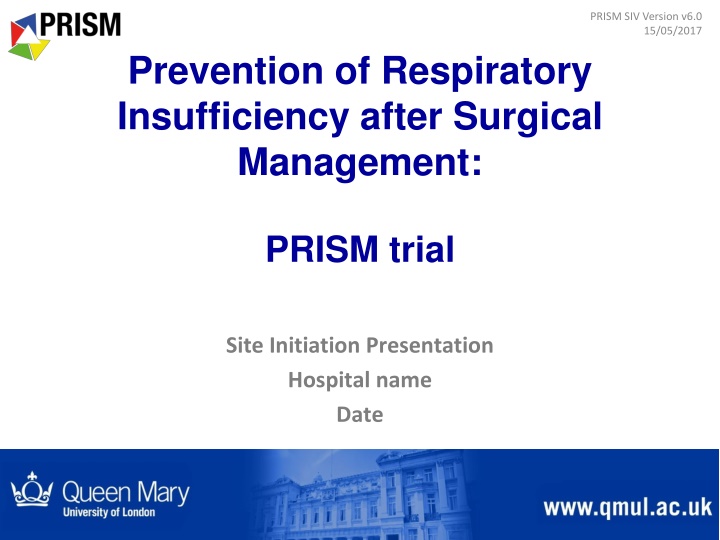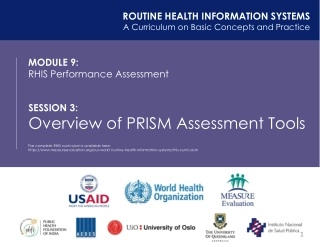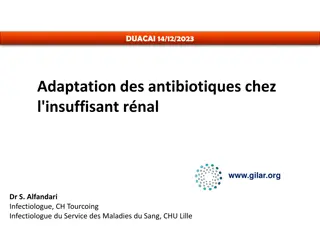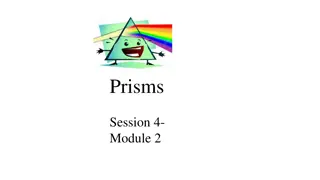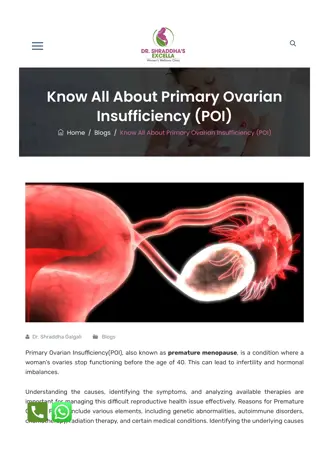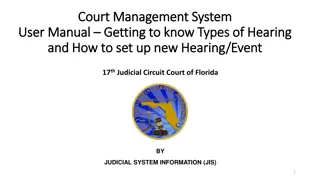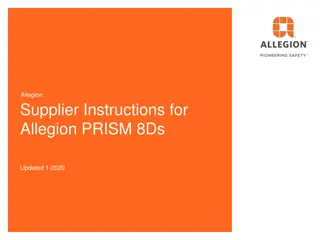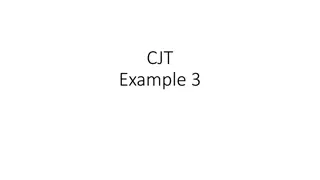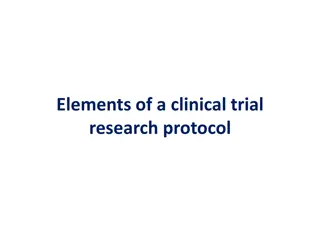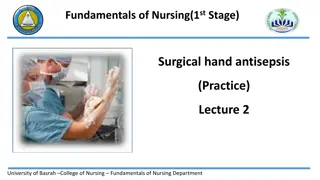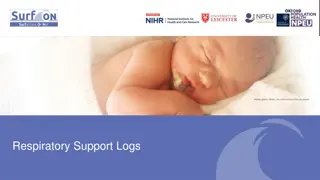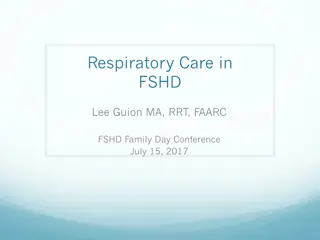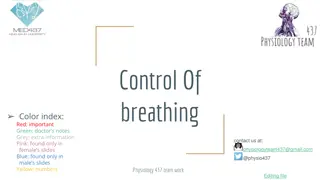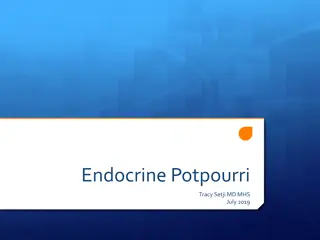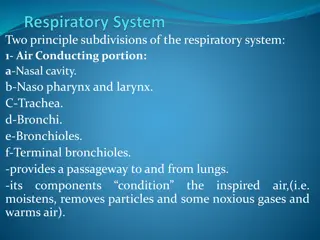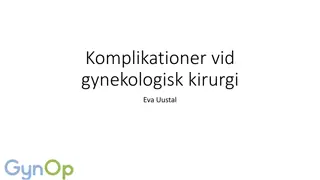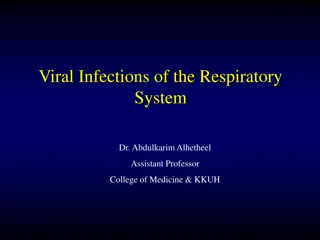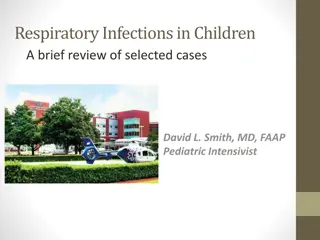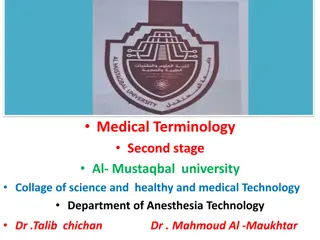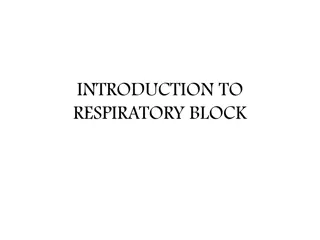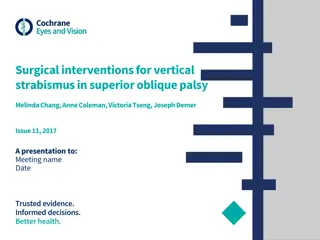Prevention of Respiratory Insufficiency in Surgical Management: PRISM Trial Overview
This overview covers the PRISM trial, focused on preventing respiratory complications post-surgery through early CPAP intervention. It includes trial objectives, design, recruitment strategies, and key findings. Led by Chief Investigators Rupert Pearse and Marco Ranieri, this international multi-center study aims to improve patient outcomes following major intra-peritoneal surgery. Learn about the importance of CPAP in reducing postoperative complications and enhancing long-term survival rates.
Download Presentation

Please find below an Image/Link to download the presentation.
The content on the website is provided AS IS for your information and personal use only. It may not be sold, licensed, or shared on other websites without obtaining consent from the author.If you encounter any issues during the download, it is possible that the publisher has removed the file from their server.
You are allowed to download the files provided on this website for personal or commercial use, subject to the condition that they are used lawfully. All files are the property of their respective owners.
The content on the website is provided AS IS for your information and personal use only. It may not be sold, licensed, or shared on other websites without obtaining consent from the author.
E N D
Presentation Transcript
PRISM SIV Version v6.0 15/05/2017 Prevention of Respiratory Insufficiency after Surgical Management: PRISM trial Site Initiation Presentation Hospital name Date
PRISM contacts Chief Investigator: Rupert Pearse & Marco Ranieri Research Fellow: Tom Abbott Senior Research Manager: Priyanthi Dias Research assistant: Mari-Liis Pakats PRISM Website: www.prismtrial.org Contact email: admin@prismtrial.org Follow us on Twitter : @prismtrial
Postoperative complications decrease long-term survival Khuri et al. Annals of surgery 2005; 242: 326-41.
The problem Atelectasis Pulmonary collapse Pneumonia Respiratory failure
? CPAP may prevent respiratory failure after abdominal surgery Ferreyra G et al Ann Surg 2008; 247: 617 626.
Objective To determine whether early postoperative continuous positive airway pressure (CPAP) reduces the incidence of respiratory complications and improves one-year survival following major intra-peritoneal surgery.
Trial design International multi-centre randomised controlled trial Open study group allocation Sponsored by Queen Mary University of London (UK) Sample size = 4,800 patients Elective surgery only 50 sites (25 UK and 25 Italy)
Trial Design Day of surgery - - - - Consent Elective Surgery Randomisation Intervention In-hospital follow-up 1-year outcomes Before surgery - - Screening Patient information sheet 30-day outcomes
Recruitment Aim to contact patients at least 24 hours prior to surgery Identify patients in the pre-admission or surgical outpatient clinic The first approach should be by a member of the clinical team Written informed consent must be obtained before surgery Keep a log of all the patients screening for participation.
Informed consent PI or delegate Explain aims, methods and benefits/hazards Patient information sheet Informed consent form Consent must be given before the start of surgery
Inclusion criteria Age 50 years Elective major intra-peritoneal surgery Planned use of open technique
Exclusion criteria Inability or refusal to provide informed consent Anticipated requirement for mechanical ventilation for at least four hours after surgery Pregnancy or obstetric surgery Previous enrolment in PRISM Current participation in a clinical trial of a treatment with a similar biological mechanism or related primary outcome measure Clinician refusal Contraindication to continuous positive airway pressure (CPAP)
Randomisation After informed consent After the surgery has completed (up to 4h after the end of the surgical procedure) Via the PRISM online database Randomisation criteria: Planned surgical procedure category Planned use of epidural anaesthesia
Randomisation Register at http://database.prismtrial.org Enter username and password provided at registration Click randomise patient and enter relevant information
Intervention CPAP for at least four hours, ideally started within four hours of completion of surgery
Intervention group CPAP for at least four hours ideally started within four hours of the end of surgery Can be commenced up to 12h after the end of surgery Delivered by trained staff according to local policies Mask, nasal or helmet/hood delivery device Clinician can choose CPAP machine Minimum airway pressure 5cmH2O Can be increased to maximum of 10cmH2O NB. HFNO is not considered CPAP
Intervention algorithm Completion of surgery Patient transferred to appropriate clinical area for delivery of CPAP CPAP started via mask, nasal or helmet device at airway pressure of 5 cmH2O Consider increasing airway pressure in obese patients CPAP adjusted according to clinician judgement. Maximum airway pressure 10 cmH2O After 4 hours, CPAP continued at the discretion of clinician Intervention period ends. Follow-up procedures
Usual care group Managed by clinical staff according to hospital policy Facemask oxygen is usual good practice Usual care patients receiving CPAP within 12 hours recorded as protocol deviation
Primary outcome Pneumonia, endotracheal re-intubation or death within 30 days of randomisation
Secondary outcomes Pneumonia within 30 days of randomisation Endotracheal re-intubation within 30 days of randomisation Death within 30 days of randomisation Postoperative infection within 30 days of randomisation Mechanical ventilation (invasive or non-invasive) within 30 days of randomisation All-cause mortality at one year after randomisation Quality adjusted life years (QALY) at one year after randomisation
Follow-up Review a participant s medical record (paper or electronic) and contact them on the telephone to conduct brief interviews at 30 days and one year after randomisation Verified by the PI or designee After the completion of one-year follow up the PI or designee will lock each case so that no further data can be entered.
Quality of life EQ-5D(3L) questionnaire Simple descriptive profile and index value for health status Ask the patient each question on the list and record the appropriate answer on the CRF
Data collection Case Report Form (CRF) completion: Timely and accurate Entered into eCRF Logins to access the eCRF will be issued by the trial team
Minimising Bias Follow-up will be conducted by a member of research staff who is unaware of trial group allocation Complications will be verified by the local PI or designee who is unaware of trial group allocation
Self assessment of blinding To quantify the degree of blinding, research staff will make a self-assessment of blinding when collecting follow-up data Grade as one of the following options: Suitably blinded May have known study group allocation Definitely knew study group allocation
Protocol deviations Failure to administer CPAP to patients in the intervention group. Starting CPAP at a dose other than 5cmH2O Administration of CPAP to a patient in usual care group. Administration of CPAP for less than 4 hours. Administration of CPAP with significant interruption for a patient in the intervention group.
Adverse event reporting Only AEs clearly related to the use of CPAP will be reported PI responsible for confirming relatedness to CPAP Pre-defined AEs are listed in the AE SOP and protocol If AE does not fit into pre-defined categories record as other Clinician to decide if it is safe to continue using CPAP Please refer to the AE SOP
SAE reporting Report potential SAEs to the trial coordinating centre within 24 hours Must be assessed by PI (or suitably qualified nominee) as probably or definitely caused by CPAP and meet at least one of the following criteria: Results in death Is life threatening Clearly prolongs hospital stay Causes significant disability or incapacity CI will assess and discuss with PI as required
SAE reporting Untoward medical occurrence in a patient in the intervention group No Is the untoward occurrence clearly related to the use of CPAP? Not an adverse event. Does not require reporting as part of PRISM trial. Yes Has it resulted in death, significant disability or incapacity, prolonged hospital stay or is it life threatening? Adverse event. Please report to the PRISM trial co-ordinating centre via the online case report form. No Yes Serious adverse event. Please notify the PRISM trial co-ordinating centre by emailing admin@prismtrial.org and report specific details via the online case report form within 24 hours.
Withdrawal All study participants are free to withdraw from the study at any time. All randomised patients will be included in the final analysis on an intention to treat basis, unless they specifically ask for their data not to be included. Record a reason using discontinuation form
Patient identifiable information Will be collected and entered on to the secure data entry web portal Please do not send any patient identifiable information by email to the trial office e.g. name, address, date of birth, hospital number, national insurance number etc. Use only the PRISM trial ID to identify a participant.
Monitoring Each site will receive 3 monitoring visits: Site initiation visit After 10 patients recruited or at 1 year, whichever is sooner Closeout visit 100% Source Data Verification (SDV) up to 30 day follow-up for up to 10 patients at each visit. At closeout, patients monitored at first visit will have 1 year data verified Possible ad-hoc visits Site self assessment for random selection of 20% of patients
Study Procedures Screening & enrolment log to be completed Investigator Site File (ISF) Delegation log signed Standard Operating Procedures (SOPs) Copies of all investigators CVs & GCP/RGF certificates must be filed in the ISF
Trial Initiation When R&D approval is in place and all documentation has been sent to us, the trial can begin. Please send the following prior to activation: Localised patient documentation (PIS, ICF, GP letter) Signed protocol agreement PI CV&GCP R&D approval letter Completed delegation log Signed SIV checklist (at this meeting or after) The PI must register on the trial database and enter general site information.
Key points Each site must have regulatory approval Randomise after the surgery has finished Informed consent must be obtained Timely entry of CRF data into the eCRF
